http://eackouye.i.ph/blogs/eackouye/2008/04/18/19-things-to-do-after-installing-ubuntu-linux/
Home » Post Item » 19 things to do after installing Ubuntu Linux
Friday, April 18, 2008 Step 1 : - Enabling Additional Repositories
Now many applications need additional repositories to be installed or some to be enabled in Synaptic package manager so before trying out steps given below ensure that repositories in order.
Launch Synaptic Package Manager (
System -> Administration -> Synaptic Package Manager ) , then in Synaptic package manager go to (
Settings -> Repositories ) you will find window like this . Ensure that all the check boxes are marked leaving source code(if you want to you can enable this also but you are not going to need this unless you are software developer) the dialog box should look like this .
After completing above step you will find a dialog box like this
Besides these you may also like to add medibuntu repositories if you want to install applications like ——- , to add mediubuntu repositories follow the following steps
echo "deb http://packages.medibuntu.org/ gutsy free non-free" | sudo tee -a /etc/apt/sources.list
and
wget -q http://packages.medibuntu.org/medibuntu-key.gpg -O- | sudo apt-key add - && sudo apt-get update
2. Enabling Cool Graphics Effects
Unlike previous releases of Ubuntu where one had to manually download and install compiz,beryl etc (Compiz Fusion is composite window manager that provides best features of Compiz and Beryl) from Repositories if one wanted to have glitzy visual effects . Ubuntu 7.10 comes with Compiz Fusion pre-installed and on supported hardware offers a wide array of Visual Effect . Now depending on graphic hardware of computer one could chose from three level of Visual Effect (From
System -> Preferences -> Appearance )
None : - This mode causes Ubuntu to use Metacity instead of Compiz Fusion , with no visual effect
Basic : - Has only simple visual effects like shadows , fading windows-menus etc
Advanced : - Recommended for PC with descent graphic hardware , enables effects like wobbly windows, transparency , animated workspace switching etc
Visual Effect Dialog Box
Now , the biggest advantage of Compiz Fusion is even on really slow hardware one can have descent set of visual effects even on my slow laptop i could use Extra graphics effects though it was painful while using application like OpenOffice because of my slow hardware.
However , compiz-fusion is capable of much more and you can enable more desktop effects /customize compiz by typing the following command in the terminal window : -
sudo apt-get install compizconfig-settings-manager
After completing above step , you can customize compiz by going to
System > Preferences > Advanced Desktop Effects Settings .
3. Installing Audio/Video Codecs
The first thing anyone who wants to use Ubuntu as a replacement to their windows operating system would like to do is install support for all kind of audio/video multimedia codecs . Ubuntu does not come installed with support for major audio/video formats because of licensing issue and other issues . To install support for audio/video codecs type in the following command in the terminal window : -
sudo apt-get install gstreamer0.10-plugins-bad gstreamer0.10-ffmpeg gstreamer0.10-plugins-ugly
And if you want to install mp3 support in nautilus you may like to install mpg123 which is a nice command line based utility for playing mp3 files and it works well even on modest hardware .
sudo apt-get install mpg123
This would enable most of the popularly used codecs in the Totem Movie player which uses the GStreamer framework to play audio/video files.
If you want to use a different media player and framework you might try installing MPlayer or VLC (depending on which you prefer ) instructions on installing them are listed below .
Installing VLC Player : -
LC Player is another of popular video player available under Linux . It is released under GNU General Public license and is available for different platform including Windows,Linux,BeOS,Mac OS X etc. VLC player is based upon free open source libraries like libdvdcss,FFMpeg for decoding various video formats.One Important feature of VLC Player is it’s ability to play files over NetWork Protocols. The Frontend of VLC player is created using wxWidgets toolkit and it’s appearance can be changed by using different skins. One Popular feature of VLC Player is it’s ability to play files that are incomplete/broken or partially downloaded , making it useful for previewing file while downloading on file-sharing networks.
To install VLC Player type the following command in the terminal window : -
sudo apt-get install vlc
After completing above step launch vlc player from (
Applications -> Sound and Video -> VLC media player )
4. Installing Linux DC++ Client
DC++ is a popuar tool used for p2p file sharing and is especially popular in college campuses , to install dc++ for linux follow the following instructions .
Type the following command in the terminal window: -
sudo apt-get install linuxdcpp
And after completing above step launch dcpp from (
Applications -> Internet -> DC++
Linux Client of popular DC++ Application
aMule
aMule is alternative to popular eMule program on windows platform , amule supports/works with eDonkey2000 Network or Kadnetwork and allows P2P sharing of files . aMule is available on number of platforms , Current supported systems include
Linux,
Mac OS X,
FreeBSD,
NetBSD,
OpenBSD,
Windows and
Solaris.
To install aMule type the following command in the terminal window : -
sudo aptitude install amule
After completing above step launch aMule from (
Application -> Internet -> aMule)
5. Installing Adobe Acrobat Reader
* Requires Mediubuntu repositories
Type in the following command in the terminal window :
sudo aptitude install acroread acroread-plugins acroread-escript
and , plugin for firefox
sudo aptitude install mozilla-acroread
6. Installing Macromedia Flash support and Sun Java JRE
Both Macromedia Flash and JRE are an important part of internet experience almost all the websites use either of the two technology to add extra functionality to the web page . By default Ubuntu does not come preinstalled with support for these two , however they can be installed quite easily by typing in the following command in the terminal window .
To install flash type in the following command in the terminal window this command is going to download a script that would further download the files needed for installing flash-support and install it .
sudo apt-get install flashplugin-nonfree. Script downloading further files needed for installing flash support
and to install Sun Java JRE type in the following command in the terminal window .
sudo aptitude install sun-java6-jre sun-java6-plugin sun-java6-fonts
7. ScribusScribus is one of the most impressive Desktop Publishing application that is free and cross platform . Scribus is available on Windows , Mac OS X , Linux , OS/2 etc . It is highly suited for preparing file for professional quality image setting equipment .It has high end page layout features of the kind found in
Adobe PageMaker,
QuarkXPress and
Adobe InDesign.
It can also create animated and interactive
PDF presentations and forms. Example uses include writing small
newspapers,
brochures,
newsletters, posters and
books.
Anyways , to install scribus type the following command in the terminal (
Application ->Accessories -> Terminal )
sudo aptitude install scribus
and after completing above step launch scribus by typing
"scribus" in terminal window.
8. Downloader For X
Downloader for X is a nice download manager that allows downloading files from Internet , pausing them and downloading them later . It also supports splitting file into number of segments so that files could be downloaded quickly . However one thing that i didn’t like about is it’s interface is somewhat difficult as compared to some of the download manager available on Windows.
Anyways to install " Downloader for X " type the following command in the terminal window.
¨sudo aptitude install d4x "
After installation is over launch ¨Downloader for X¨ by typing ¨d4x¨ in the terminal window , or by going to (
Applications-> Internet -> Downloader for X )
9. Google Desktop
Google Desktop allows one to full text search of a user’s e-mail, computer files, music, photos, chat, and Web pages viewed,OpenOffice documents , PDF files and more .
Now similar tools already existed on Linux like beagle (supported by novell ) , meta tracker etc . However Google Desktop search is not based on any of these tools and uses its proprietary algorithms to search for files on the computer ,also being 1.0 release and more stable then these products it could be preferred over tools like beagle .
To install type the following command in the terminal window : -
wget http://dl.google.com/linux/google-repo-setup.sh
and
sudo bash google-repo-setup.sh
Now after completing above steps to install Google Desktop Search type the following command in the terminal window : -
sudo apt-get update
and
sudo apt-get install google-desktop-linux
After completing above step logout of gnome session and relogin you would find the following dialog window
select the appropriate option : -
Now after choosing appropriate option you would find Google Desktop icon in the bar at the top of the screen , now it would automatically scan and index files on computer and store it in local database which could be searched using web browser .
Google Picasa
Google Picasa is an extremely professional good looking photo management application available on Windows ,Linux and Mac OS (??) . Now Google Picasa has a number of features that many photo management software on Linux dont have further Google Picasa looks very user friendly as compared to similar open source application available on linux . Now Google Picasa for Linux is not a native linux application but runs on Linux thru application layer called wine which allows many windows application to run flawlessly on Linux.
Now to install Google - Picasa type the following command in the terminal window
wget http://dl.google.com/linux/deb/pool/non-free/p/picasa/picasa_2.2.2820-5_i386.deb
and
sudo dpkg -i picasa_2.2.2820-5_i386.deb
After completing above step launch Google Picasa from
Some Tips to consider before running picasa (taken from google picasa website )
Tips
- If you use NFS, when Picasa first starts, tell it to scan just your desktop! Otherwise Picasa gets real slow while it scans all your NFS directories!
- To get Picasa to see pictures on your hard drive, click "File / Add Folder" (NOT "Import").
- When adding a folder to Picasa, the default action is to remove the folder from Picasa. You have to actively choose Scan once or Scan always.
- Picasa is not supported over remote X connections.
10. Google Earth
To install Google Earth type the following command in the Terminal Window (Application->Accessories -> Terminal ),keep in mind that googleearth is downloaded from Medibuntu repositories and not Ubuntu hence be sure you have activated the repositories correctly as described in first step of this article.
¨sudo aptitude install googleearth"
After downloading is over you will get a screen like this press ¨Yes¨ to accept the license agreement and complete software installation.
Now you can launch Google Earth from (Application -> Internet -> Google Earth)
11. Installing gdeskletsgdesklets gives user a collection of impressive widgets that can be placed on desktop this is similar to feature available on Windows Vista and Mac OS X , it does provide quite a good look to the desktop.
To install gdesklets issue the following command at the command line
sudo apt-get install -y gdesklets
after installation go to (
System -> Preferences -> Sessions) There go to Start up program and add gdesklets shell , now every time gnome loads up you should see your gdesklets on the desktop.
12. Installing MPlayer with all codecs and dvd playing support
*This step requires Medibuntu repositories
MPlayer is one of the most popular media player available on linux , it supports playing all the major audio/video file formats . With w32codecs and libdvdcss2 it plays all the major audio/video format,however w32codecs has dll files from windows operating system hence its not available on the ubuntu official repositories and needs to be downloaded from the mediubuntu repositories.
To install MPlayer with all codecs type in the following command in the terminal window : -
sudo apt-get install mplayer
and
sudo apt-get install w32codecs libdvdcss2
After completing above steps you could launch MPlayer by typing in gmplayer in the terminal window or from (
Application -> Sound & Video -> MPlayer Movie Player )
Quod Libet : -
Quod Libet is an extremely versatile music player based on GTK+ that is extendible via plugins , has a rich feature set and has really unique feature of building playlist by searching for particular kind of music files based on search terms or regular expression . It has been programmed in Python programming language and hence it’s plugin are also created in Python. A number of plugins are available including ones that help in copying songs to digital audio players , last.fm plugin , advanced editing features and many more .
Quod Libet uses GStreamer framework of GNOME to play audio files and hence integrates quite well the the GNOME desktop environment , also audio format supported would be same as the one supported by GStreamer so you may want to install mp3 support since by default many linux distributions these days dont come with mp3 support installed.
To install Quod Libet type the following command in the Terminal Window : -
sudo apt-get install quodlibet
and after completing above step launch quod-libet from (
Application -> Sound & Video -> Quod Libet )
Quod Libet Website : -
http://www.sacredchao.net/quodlibet
13. Installing ntfs-3g
ntfs-3g this is necessary if you have a ntfs drive in your computer ( Usually Windows XP installs on NTFS drive) and you want to read and write data to the drive you have to install this .
This can be installed as following type the following at the command prompt
sudo apt-get updatesudo apt-get upgrade
sudo apt-get install ntfs-config
Then type the following command
gksu ntfs-config
This is automatic configuration of ntfs-3g , enable read , write support and it should be configured.
these commands would back up fstab file if configuration goes wrong.
sudo cp /etc/fstab /etc/fstab.bak
gksu gedit /etc/fstab
Now one more thing you want your windows (NTFS) drive to be mounted automatically add the following entries to /etc/fstab
/dev/ /media/ ntfs-3g defaults,locale=en_US.utf8 0 0
Where /dev/partition is the partition which is NTFS drive , in my case /dev/hda1
/media/ this is just the directory you want to use as a mount point where windows drive would be mounted , you can very well use any drive you like.
now Restart ubuntu your windows partition should be working well.
14. Installing flash-plugin
Macromedia Flash player is not installed by default but since we would be surely needing it while browing the net , installing it is necessary
it can be installed by following command
sudo apt-get install -y flashplugin-nonfree
15. Installing Microsoft True Type Fonts
If you are making a jump from windows to ubuntu you would surely miss the true type fonts that Windows uses , since Microsoft has released them free so they can be installed without a hitch in ubuntu (Though not distributed with Ubuntu) .
sudo apt-get install -y msttcorefonts
16. Installing unrar
RAR is one of the very widely used archives on Windows , however unrar tool to decompress RAR is not shipped with distribution and has ti be installed manually.
sudo apt-get -y install unrar
17. Installing mpg123
mpg123 is a very nice command line based mp3 player that can play mp3 files even on a slow processor based computer , further installing this provides a way of playing mp3 files from within the nautilus file manager . Hence i recommend installing mpg123
sudo apt-get install -y mpg123
18. Installing DVD playback support
Now this is a contentious issue , in some countries playing DVD files through DEcss is illegal so use it at your own will , anyways to enable dvd playback issue the following command at the command line : -
sudo aptitude install libdvdcss2
Note : the above commands would only work if you have added the repositories i had mentioned before the Seveas repositories.
However if you do not have these Repositories installed issue the following command to install the DVD playback support : -
sudo /usr/share/doc/libdvdread3/./install-css.sh
19 .
Installing the extra multimedia codecs,players
Now you would surely want to install all the codecs for playing various media files and the players primarily xine,vlc,mplayer issue the following commands to install the multimedia codecs.
sudo apt-get install gstreamer0.10-pitfdll gstreamer0.10-ffmpeg gstreamer0.10-gl gstreamer0.10-plugins-base gstreamer0.10-plugins-good gstreamer0.10-plugins-bad gstreamer0.10-plugins-bad-multiverse gstreamer0.10-plugins-ugly gstreamer0.10-plugins-ugly-multiverse libxine-extracodecs w32codecsvlc mplayer
This command would install most of the codecs for gstreamer multimedia architecture and vlc media player and Mplayer , as well as the dll files codec (w32codecs) for decoding various files whoose open source decoder are not available.

main source at:
http://www.geocities.com/ubuntu_help/19thingstodo.htm













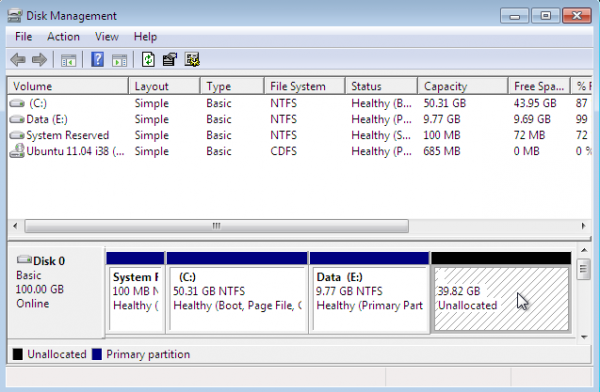
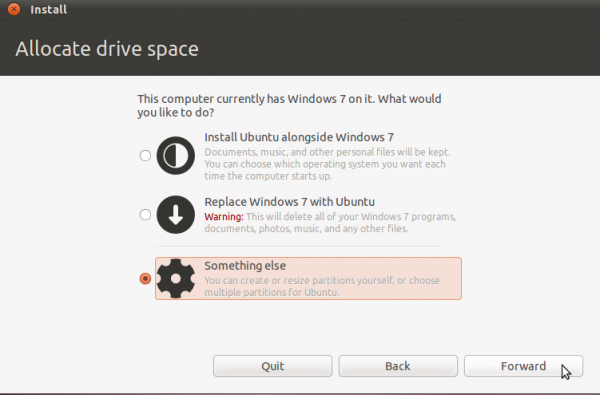
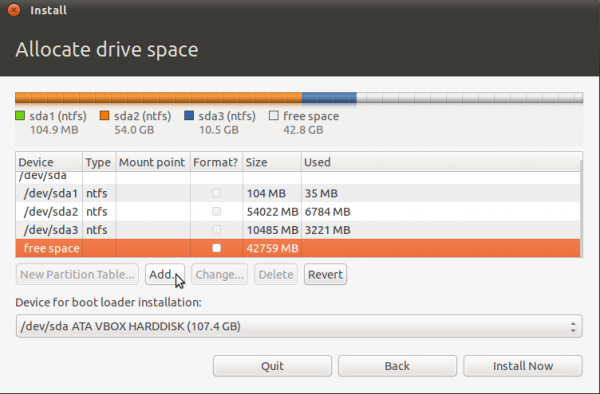
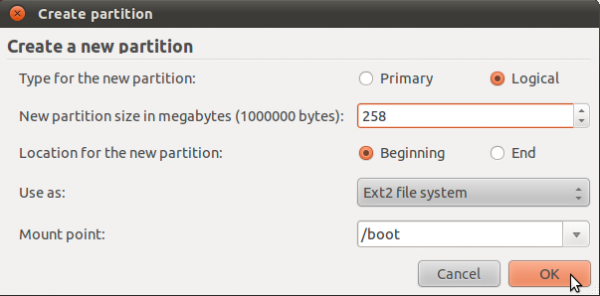
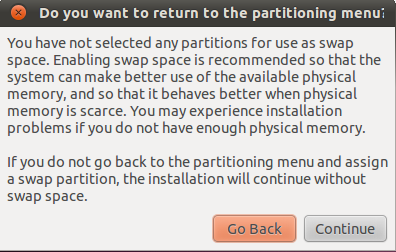
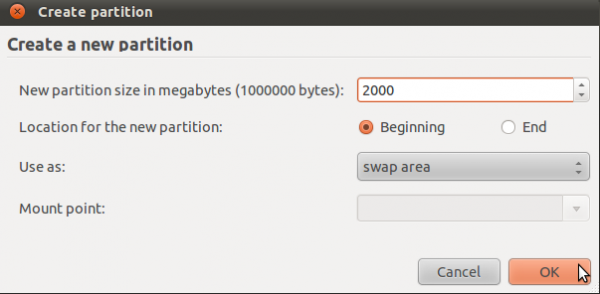
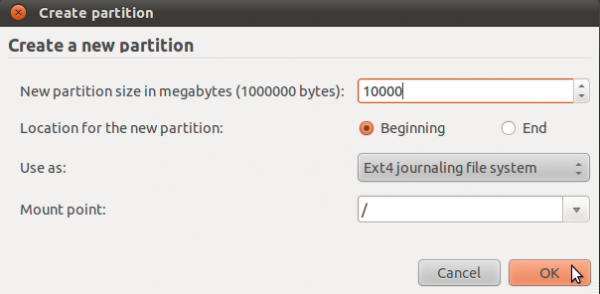
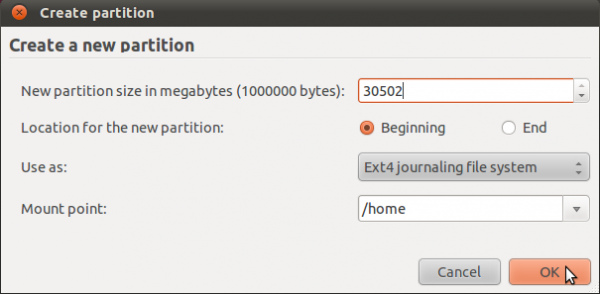

เพิ่มเติมครับ ถ้าเอา icon ต่างๆที่เราได้ ปรับแต่งไว้ นอกจากที่เขามีมาให้แล้ว ทำต่อตรงนี้นิดนึงครับ
ก่อนที่จะสร้าง
กด Alt+F2 พิมพ์ gksudo nautilus เพื่อเข้าใช้งานในสิทธิ์ของ root ใส่ รหัสผ่านให้เรียบร้อย
จ จะขึ้นหน้าต่าง root หน้าที่มีแต่ ไอค่อน desktop แล้วไปที่ มุมมอง หรือ view หรือกด Ctrl+H เพื่อ แสดงแฟ้มที่ซ่อน จะเห็นว่ามีโฟลเดอร์ขึ้นมามากมายเราก็จัดการเลือกทั้งหมด แล้วคัดลอกไว้ครับ
จากนั้นไปที่ file system หรือระบบแฟ้ม etc / sokel
ต่อ ไป คลิกขวาที่ว่างแล้ว วาง paste ลงไป ถ้าถามว่าจะเขียนทับหรือไม่ก็ข้ามไปครับ อย่าง .profile , .bashrc , .pulse-cookie ไม่ต้องเขียนทับครับ
อ้อ อย่างไรก็ตามลบไฟล์ขยะ และ เอกสารที่เพิ่งใช้งานก่อนก็ดีนะไม่งั้นมันมาด้วยครั